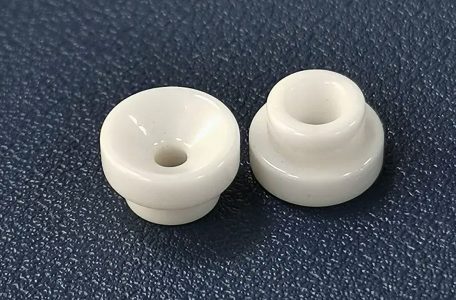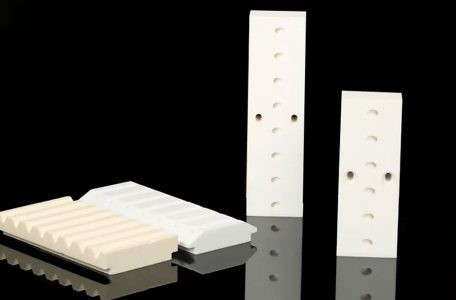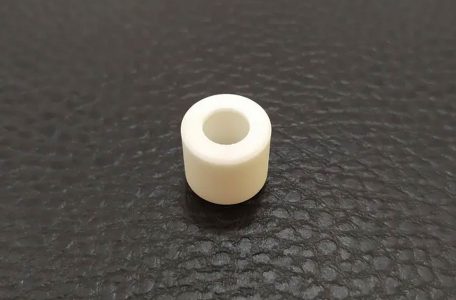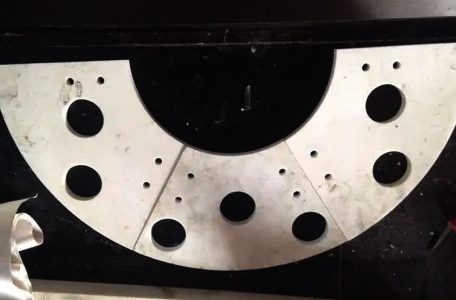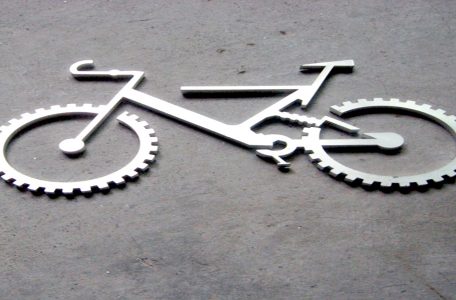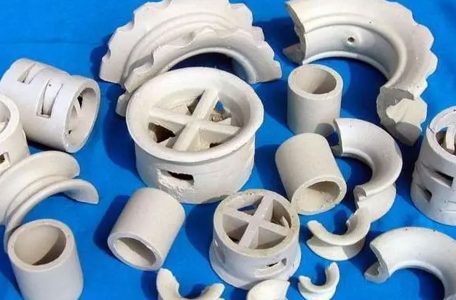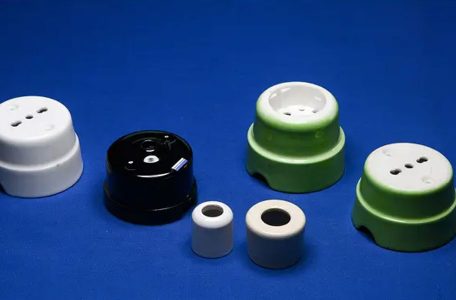The damage of the ceramic plate is mainly caused by the unstable propagation of cracks. The action of the tool tip during machining will leave a certain degree of sharp machining marks on the machined surface, resulting in small crack defects and stress concentration, reducing The fatigue strength of structural ceramic parts affects the electrical and magnetic properties of functional ceramic plates. Therefore, ultra-precision machining of ceramic plates must be carried out to reduce small crack defects and stress concentration, and to improve the fatigue strength of parts. Usually, the high-precision machining that reaches or exceeds the accuracy limit of this era is called ceramic ultra-precision machining. In the 1980s, Read more
Blog
General ceramic materials will have burrs on the surface when they are sintered. In order to meet the requirements of use, the surface is often brighter and smoother by polishing. Next, Pintejin Ceramics will introduce the polishing of mirror zirconia ceramics. After the zirconia ceramic parts are formed and sintered, there will be many uneven peaks and valleys on the surface, so it is necessary to grind and polish a super-finishing method that has a significant effect on ceramic roughness. From the perspective of material removal mechanism, grinding is a machining method between brittle failure and elastic removal of zirconia ceramic structural parts, while polishing is basically carried out within Read more
Most ceramic products are basically white, and the color of alumina ceramics is of course the same. But for what reason, these ceramic products will turn from white castings to light yellow after a long time of use. Is it because the color of the alumina ceramics has changed? Of course not, the Pintejin Ceramics Factory will give you a detailed introduction. !Alumina ceramic rod The reason why the color of alumina ceramics is white and gradually becomes light yellow is because the internal composition changes after sunlight exposure, and this change is irreversible, so the color will also change. On the other hand, it may be that the alumina Read more
Zirconia ceramic binders Wax-based or oil-based binders, water-based binders and solid polymer solutions. Zirconia ceramic wax-based binders usually contain 3-4 components, and the polymer controls the flow viscosity, green product (green body before sintering) strength and degreasing characteristics. The short molecular chains have good forming properties and can minimize orientation effects in the forming element. Zirconia wax or oil is the main filler and is removed during the initial stage of degreasing. Zirconia ceramic surfactants are used to improve the compatibility of powders with binders. Zirconia ceramic plasticizers are used to adjust the flow properties of polymers. Zirconia ceramic water-based binders contain water-soluble polymers, gels or water glass. This type Read more
Ceramic molding process, including specific methods and molding equipment for ceramic molding. The ceramic molding process is one of the ceramic manufacturing processes. Let Pintejin Ceramics introduce the specific process and method of the ceramic molding process. The process of zirconia ceramic machining ceramic molding process is roughly as follows: raw materials are formed by gypsum or resin master mold by means of low pressure quick discharge or high pressure grouting – drying – glazing – firing – assembly – packaging, each All procedures are subject to full inspection or experimentation. The methods used in the ceramic forming process mainly include grouting, pressing, plastic forming and isostatic pressing. Below we Read more
Structural ceramic materials are divided into two categories: structural materials and functional materials. When a material mainly uses its mechanical properties, this material is called a structural material. If it mainly uses its non-mechanical properties, it is called a functional material. In the literature, functional materials are often defined as “materials that utilize their physical properties”. From the perspective of discipline classification, physical properties are relative to chemical properties, mechanical properties are included in physical properties, and functional materials include chemical functional materials. Appropriately, mechanical properties usually refer to strength, plasticity, toughness, elasticity, hardness, fatigue, etc.; non-mechanical properties mainly refer to sound, electricity, time, magnetism, and chemistry. Structural Ceramics For Read more
Zirconia ceramic laser machining uses a uniform laser beam with high energy density (108-1O10W/cm2) as a heat source to generate instantaneous high temperature at a local point on the surface of the processed ceramic material, and local point melting or gasification to remove the material. Laser machining is a non-contact and frictionless machining technology. No mold is required in the machining process. By controlling the focusing position of the laser beam on the surface of the ceramic material, the machining of three-dimensional complex shape materials is realized. Ceramic laser machining is suitable for micro-drilling, micro-cutting, and micro-structure fabrication on inorganic materials such as organics and ceramics. At present, micro-holes with Read more
The emergence and development of engineering ceramic cutting tools have raised the cutting technology to a new level. Ceramic tools were developed in the 1950s. The hardness of the tool material is 93HRA-94HRA, the bending strength is 800-1000MPa, and it can be cut normally at a high temperature of 1200-1300 °C. Alumina-based ceramic cutting tools were successfully developed in the 1960s and put into use in the 1970s. They are also one of the most widely used ceramic cutting tools at home and abroad. Since Shandong University began to develop alumina-carbide series composite ceramic tools in the 1980s, it has achieved remarkable results, and its mechanical properties have reached the Read more
An overview of the ceramic spray process The use of ceramic thermal spraying technology can not only improve the wear resistance, corrosion resistance, erosion resistance, thermal stability and chemical stability of machinery and equipment, but also endow common materials with special functions, such as high temperature superconducting coatings, biological coatings Therefore, thermal spraying technology will inevitably attract more and more attention and be more and more widely used in various industrial fields. However, the actual parts vary greatly due to their material, shape, size, application environment, service conditions, etc. In order to successfully use thermal spray coating to solve the technical problems faced, a specific process must be followed. Among Read more
Zirconia ceramics have excellent properties such as high melting point and boiling point, high hardness, good toughness, good wear resistance, insulators at room temperature, and electrical conductivity at high temperatures. What are the machining processes of zirconia ceramics? Next, Pintejin Ceramics to introduce to you. Zirconia ceramic machining flow 1. Purchase of raw materials, namely zirconia powder, zirconia powder is a white heavy amorphous powder, odorless, tasteless, soluble in a mixture of 2 parts of sulfuric acid and 1 part of water, slightly soluble in hydrochloric acid and nitric acid, slow Soluble in hydrofluoric acid, almost insoluble in water.It is irritating, the relative density is 5.85. The melting point is Read more

Ceramic Machining Industry
- Ceramic Flange
- Ceramic Nozzle
- Ceramic Pin
- Ceramic Plunger
- Ceramic Rod
- Ceramic Shaft/Ceramic Sleeve
- Ceramic Structure Parts
- Ceramic Valve
- Ceramics Cutter
- Electronic Ceramics
- Medical Food Ceramics
- Petrochemical Ceramics
- Photovoltaic Ceramic
- Semiconductor Ceramics
- Microporous Ceramic Suction Cup
- Lithium Battery Ceramic Pump
